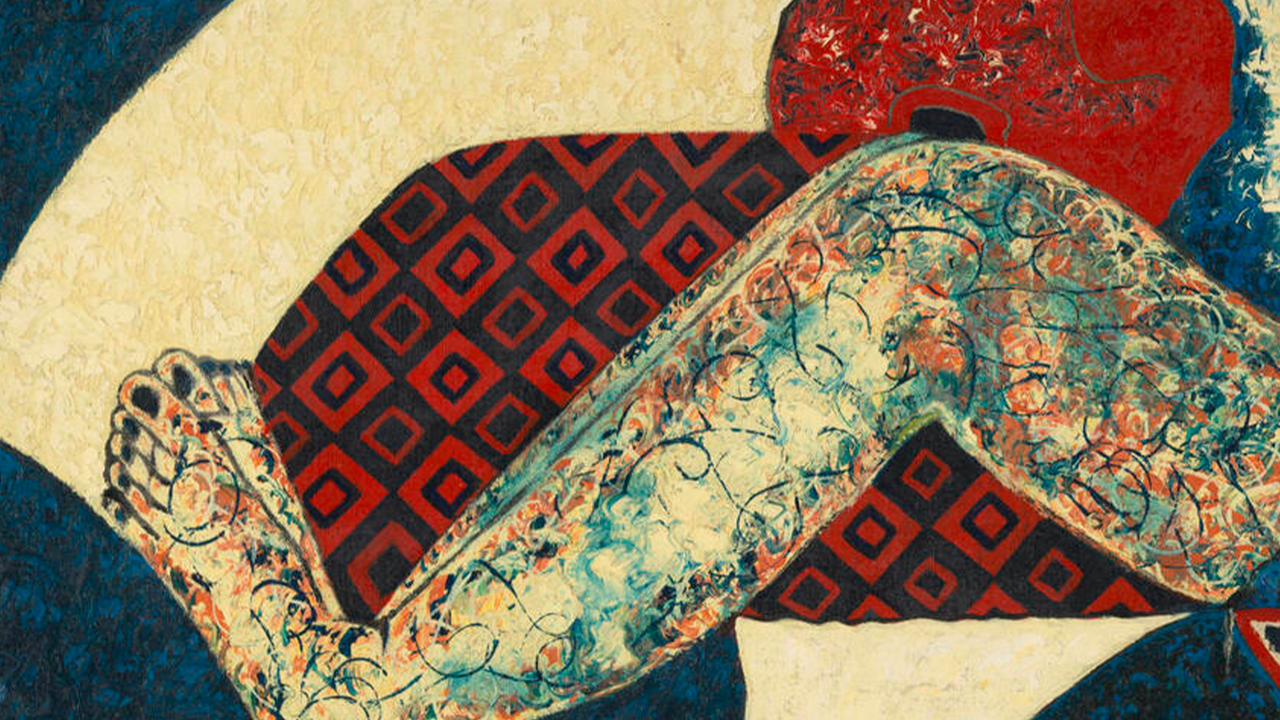Philip Guston's Poem-Pictures
Nearly 30 years ago, Philip Guston's painting style shuttled from lyrical abstraction to those embroiled and endearing scenes of clocks, shoes, cigars, three-day-old stubble and Cyclops heads; it was not a celebrated trip. Hilton Kramer, America's reigning cultural knuckle-head, was then, somehow, art critic for the New York Times. In that newspaper he condemned the switch, accusing Guston of impersonating a 'stumblebum'. Kramer's myopic criticism was (and largely remains) wooden in devotion to Modernism's party line. It was symptomatic of the era. A fair amount of the stinging rejection Guston experienced in New York around 1970 was due to the prevailing commitment to preserve the streamlined purity of Modernism's cultural flagship: Abstract Painting. Guston recoiled. He did not retreat.
Around 1968 Guston had concluded that abstraction, as it was rehearsed beneath the colours of the New York School, had become both drudgery and a lie. Somewhere the style had lost the integrity he once admired and helped to parent. Worse still, it was being paralysed by an awfully restricted reading of what Modern Painting could be. 'There is something ridiculous and miserly in the myth we inherit from abstract art', he once said, 'painting is autonomous, pure and for itself, and therefore we habitually define its limits. But painting is "impure". It is the adjustments of impurities which forces painting's continuity'. Guston's pictures after 1968, stark landscapes, empty but for bottles, ladders, frightful KKK characters, and lone light bulbs, were a first attempt at this adjustment. They affirmed the 'impurity' which Guston had begun to nurture. That Kramer and so many others lacked minds flexible enough to see through to the idea of continuity shocked Guston. He left New York City for the town of Woodstock where he came to know numerous poets and writers. He revived the withered camaraderie he had enjoyed amongst his abstract painter friends with a few poets; among them Stanley Kunitz, Clark Coolidge and William Corbett, and his wife Musa McKim. Guston's Poem-Pictures followed in fairly great numbers. Not only were they testaments to his new found status within a particular society of literary artists, but they further compounded the chemistry of his new style, earlier condemned as toxic to the purity of Abstract Painting. In the Poem-Pictures, imagery continued to seep in, but now it had become even more virulent and underscored by the written word.
Certainly, the Poem-Pictures desecrated the seamless stretch of critical rhetoric that fenced off the crisp contours of Abstract Painting. Imagery mixed with poetry made an unholy alliance that offended the utopian sanctity steadfastly claimed for Modernist Painting. But, being back-handed, critiques of that limiting rhetoric provided only scant measure of their weight, for the Poem-Pictures succeeded in providing the 'continuity' Guston had envisioned for Modern Painting.
Siding with the free spirit of the times, the drawings were put forward as amalgams, the third-thing-hybrid, where democratic collaboration supersedes the artistic individual. Guston, and his poet-collaborators, have insisted that the poem fragments the painter chose to work with were not his captions, any more than his drawings were their illustrations. They were, it was claimed, 'pure': free of ego and hierarchy. But in fact, they were not. The verse limps along next to the drawings. To continue to insist otherwise is as foggy and 'utopic' as the misguided claims for Modern Painting's purity that Guston wisely railed against. The aspiration to create 'not this, or that,' to create the third thing, is admirable; however, the coarse reality of the poet's mediocrity sets that claim out of reach and reason. There is an indelible hierarchy in the Poem-Pictures: though he may have wished it otherwise, Guston sits squarely on top. The poetry often has the scent of ambition but typically goes flat, and is rendered almost incidental once set in tandem with the drawings. Consider these lines by Clark Coolidge: 'I have a large dog I taught to lie still. A thinness that eats room... To lie down for a tire...'
'I have a large dog'? I am bored. Granted, Guston chose the poems and poem fragments he would work with, but it is equally true that he worked with what he had. The poems in the Poem-Pictures are rarely inspired accounts of the rich, comical and sinister starkness Guston envisioned and then made real. I have always wished Samuel Beckett and Guston could have been brought together, for together they would have been up to the job of delivering us onto the path of continuity in literature and painting. They both possessed the power to create the revelation of the third thing to which their lessers could only point.















